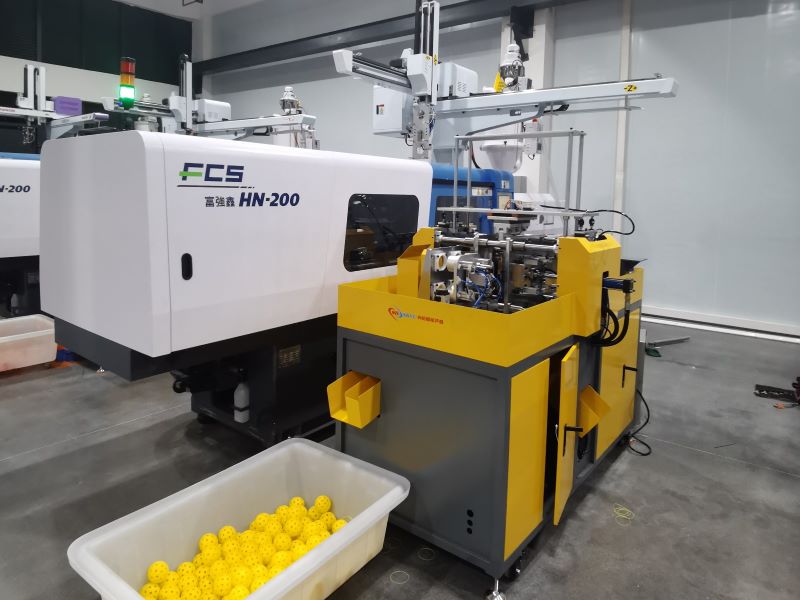The longevity and efficiency of professional pickleball welding equipment are essential for ensuring high-quality production and minimizing downtime. Proper maintenance plays a critical role in extending the lifespan of your equipment, reducing costs, and maintaining consistent output. In this article, we’ll explore key maintenance tips, the importance of a preventive maintenance program, and cost-effective ways to manage equipment care.
1. Routine Cleaning: Keep Equipment in Optimal Condition
Dirt, debris, and residue from welding processes can accumulate over time, affecting the performance of your pickleball welding equipment. To keep it running smoothly:
· Daily cleaning: Use a soft brush or cloth to remove dust and welding residue from the machine’s surface and components.
· Avoid moisture: Ensure all cleaning tools are dry to prevent rust or corrosion on metallic parts.
· Inspect cooling systems: Clean fans and vents regularly to maintain proper airflow and prevent overheating.
Routine cleaning not only ensures smooth operation but also prevents long-term damage caused by buildup.
2. Lubrication: Reduce Friction and Wear
Proper lubrication is critical for reducing friction and preventing wear on moving parts of your professional pickleball welding equipment:
· Choose the right lubricant: Always use manufacturer-recommended oils or greases to protect sensitive components.
· Schedule lubrication intervals: Establish a regular lubrication schedule based on usage intensity.
· Avoid over-lubrication: Excess lubricant can attract dirt, leading to buildup and eventual malfunction.
Well-lubricated equipment operates more efficiently and lasts longer.
3. Regular Inspection: Identify Issues Early
Frequent inspections help identify potential problems before they escalate into costly repairs:
· Check electrical components: Inspect wires, connections, and controls for signs of wear or damage.
· Examine moving parts: Look for loose bolts, worn gears, or misaligned components.
· Test operational performance: Ensure the welding equipment is functioning as intended by running periodic tests.
A thorough inspection routine can save time and money by catching issues early.

4. Preventive Maintenance: Prolong Equipment Lifespan
A preventive maintenance program is essential for keeping pickleball welding equipment in top condition:
· Develop a maintenance schedule: Plan for regular checkups, cleaning, and part replacements.
· Document maintenance tasks: Keep detailed records of performed maintenance to track wear patterns and predict future needs.
· Train staff: Ensure operators understand basic maintenance procedures to handle minor issues promptly.
Preventive maintenance minimizes unplanned downtime, enhances safety, and boosts productivity.
5. Replacing Worn Parts: Keep Equipment Functioning Smoothly
All machines have parts that naturally wear out over time. Replacing these promptly is key to maintaining equipment performance:
· Identify high-wear parts: Components like nozzles, electrodes, and seals often require frequent replacement.
· Stock spare parts: Keep an inventory of essential replacement parts to minimize downtime.
· Follow manufacturer guidelines: Use original replacement parts to ensure compatibility and maintain quality.
Timely part replacement ensures your pickleball welding equipment operates at peak performance.
6. Practical Tips to Save on Maintenance Costs
Maintaining professional pickleball welding equipment doesn’t have to be expensive. Here are some cost-saving suggestions:
· DIY basic maintenance: Train your team to handle cleaning, lubrication, and simple inspections in-house.
· Invest in quality equipment: High-quality machines may have a higher upfront cost but reduce long-term maintenance expenses.
· Use predictive technology: Implement software or sensors to monitor equipment performance and predict when maintenance is needed.
By combining these strategies, you can save money while keeping your equipment in excellent shape.
Maintain and Extend Your Equipment's Lifespan
Proper maintenance of professional pickleball welding equipment is vital for optimizing performance, minimizing breakdowns, and reducing costs. By following routine cleaning, lubrication, inspection, and part replacement practices, as well as implementing a preventive maintenance program, you can ensure your equipment operates efficiently for years to come.
Investing in regular maintenance not only protects your equipment but also enhances productivity, ensuring your business stays ahead in the competitive pickleball manufacturing industry. Start today, and enjoy the benefits of a well-maintained production line!

